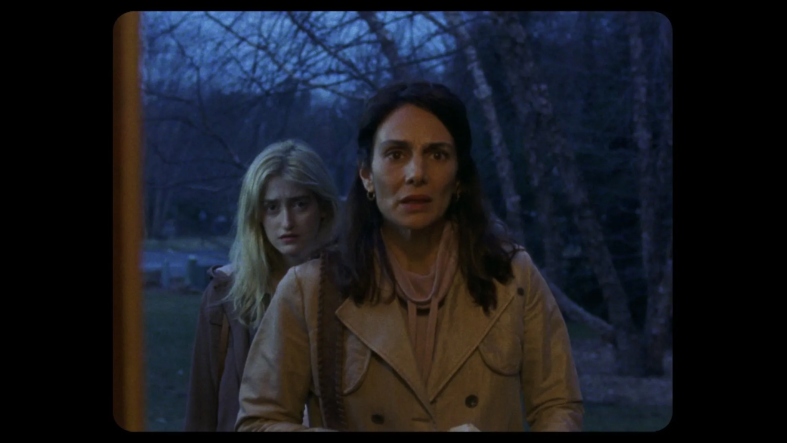‘Giving Birth to a Butterfly’ Review: A Tiny Triumph of Desperation and Rebirth

Theodore Schaefer’s anomalous debut feature, Giving Birth to a Butterfly, manages to say a lot about family, sacrifice, and identity without really saying much at all. Shot on 16mm film, there’s an ethereal, fleeting quality to the imagery that grows more and more strange as the film progresses. What starts out as a dialogue-heavy, rural tale about a struggling, distinctly American family transforms into a weird, surrealistic road trip odyssey about finding your true path.
The first half of this experimental indie is relatively straightforward. Daryl (Paul Sparks) is a fairly delusional Dad that has the dream of opening up his own diner someday. Dreams are usually expensive, and the family is broke. On the flip slide, a former actress named Monica (Constance Shulman) keeps endlessly preparing for an audition that will never come. For Daryl, his ambition mainly exists so he can blame his stalwart wife Diane (Annie Parisse) for not working hard enough to support him.
Also Read: ‘The Blackening’ Is The Horror Comedy Of The Summer [Review]
Monica’s pregnant daughter, Marlene (Gus Birney), is dating Diane’s son Drew (Owen Campbell). The two women wind up unexpectedly bonding over their unfortunate lot in life, a connection that’s strengthened when Diane becomes the victim of identity theft. To find the culprits who stole her money, they embark on an impromptu journey that changes their lives dramatically.
The more traditional narrative at the beginning of Giving Birth to a Butterfly deals with the unintended sacrifices of married life. Diane feels like she’s only one-half of herself and Daryl thinks she’s not giving enough of herself to the relationship. Typical. “It’s like she’s not even there,” he complains. The irony is that Diane’s identity had already been stolen long before her bank account got hacked.
Also Read: Justice for Mary Shaw: ‘Dead Silence’ Fifteen Years Later
The latter half of Butterfly is where Schaefer’s film takes a turn into more sinister, dreamlike territory. An encounter with two elderly, identical twins leads to a kind of self-awakening inside Diane. The two aging sisters speak in riddles reminiscent of the backward talking from The Man from Another Place in Twin Peaks. They make perfect sense without ever giving a straight answer. It’s here where Giving Birth to a Butterfly becomes a ghostly, wholly engrossing art film.
Annie Parisse’s performance as Diane is quietly powerful and carefully controlled. But Judith Roberts’ dual role as Nina is absolutely enchanting. Horror fans will remember her as the doll-obsessed specter Mary Shaw from James Wan’s woefully underrated Dead Silence. Schaefer and co-writer Patrick Lawler shower Roberts with line after line of transfixing dialogue. In a perfect world, some of Nina’s wispy wisdom would wind up on a Super Yaki T-shirt.
Also Read: ‘Jagged Mind’ Personifies the Horrors of Toxic Relationships [Review]
By the end, it all feels sort of like a cathartic, hypnotic therapy session. That makes sense, considering that Schaefer and Lawler’s mutual therapist was the one who first suggested they should meet each other. Judging by the outcome, their sessions on the couch may have been conducted by the one and only David Lynch.
This enveloping, suffocatingly drab family drama eventually blossoms into a story about exploring our own duality, and taking that one giant, dreadful leap into the uncanny. Based on the mid-20th-century poem “Love Songs” by Mina Loy, Giving Birth to a Butterfly dovetails between the mundane and the profound, the way poems often do.
Giving Birth to a Butterfly is now available on all major streaming platforms.
Summary
Giving Birth to a Butterfly dovetails between the mundane and the profound, the way poems often do.
Categorized:Reviews

